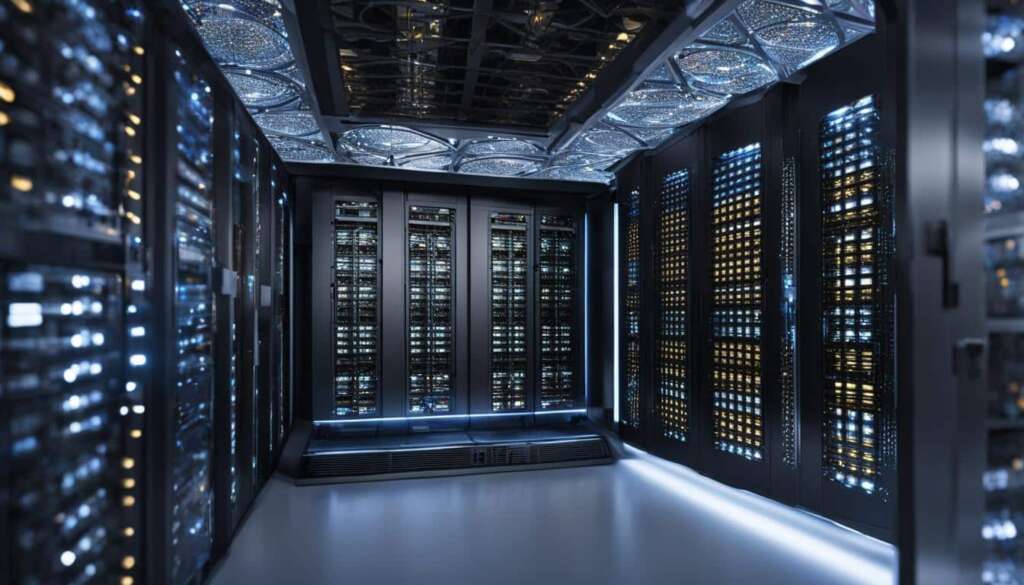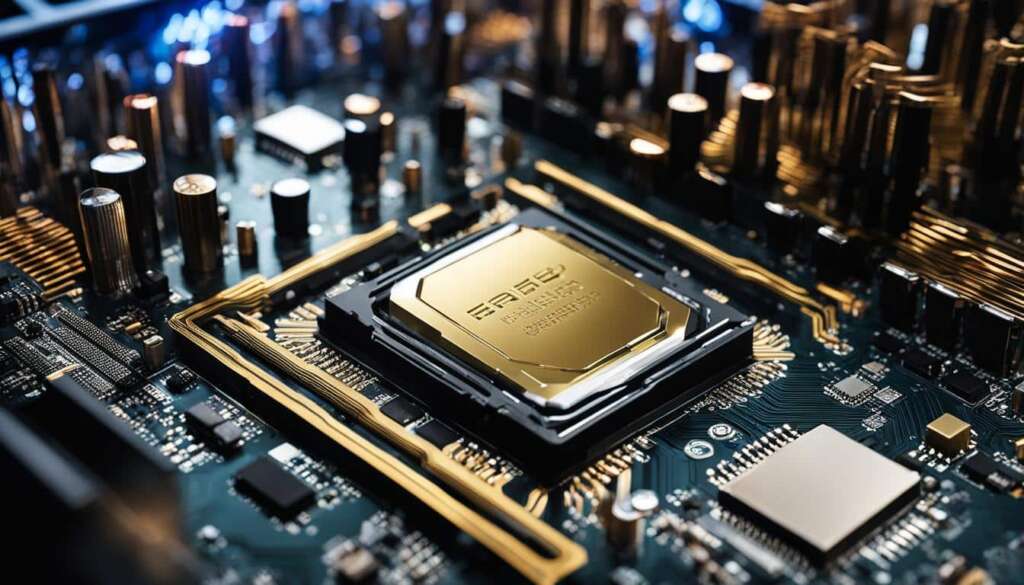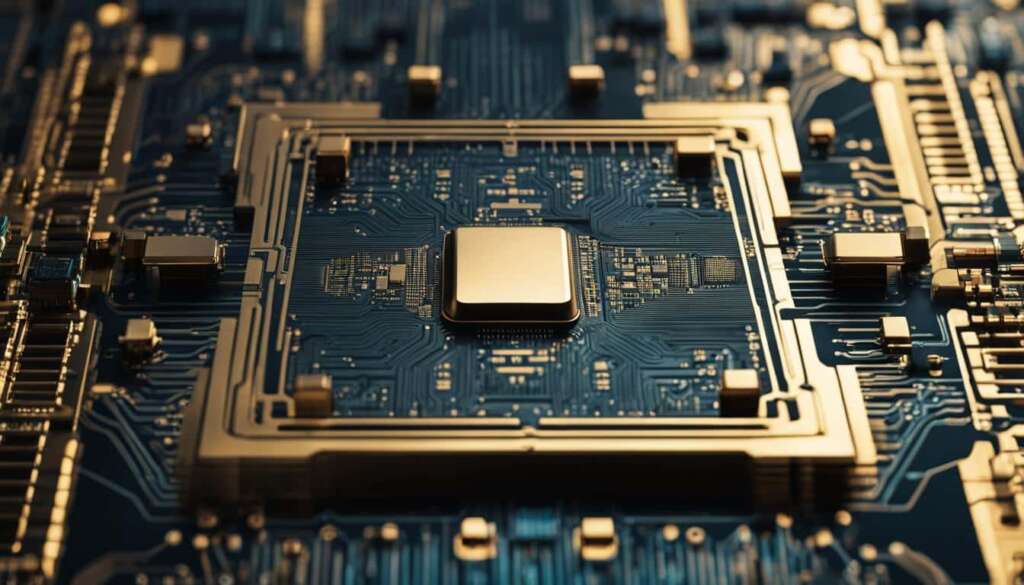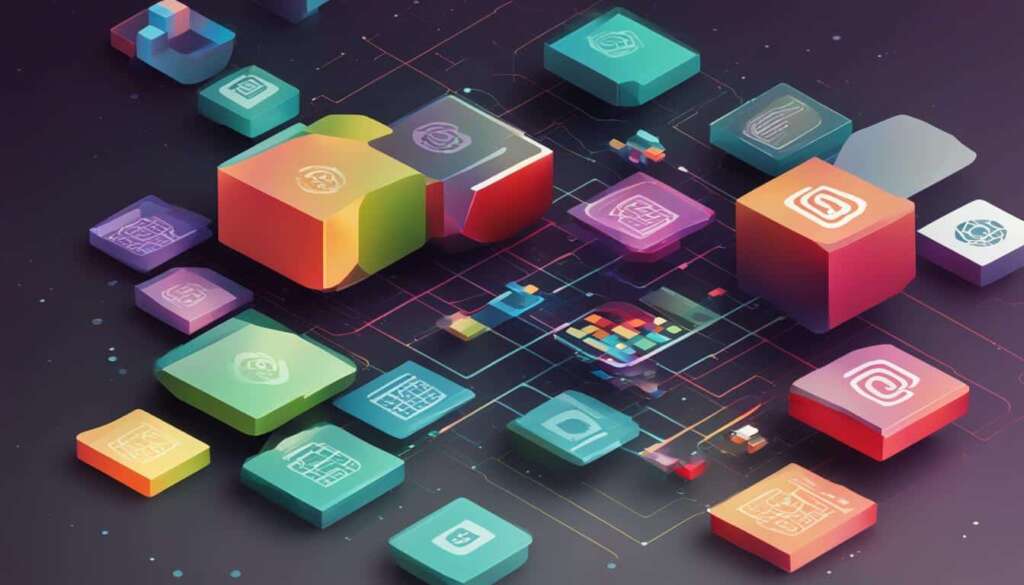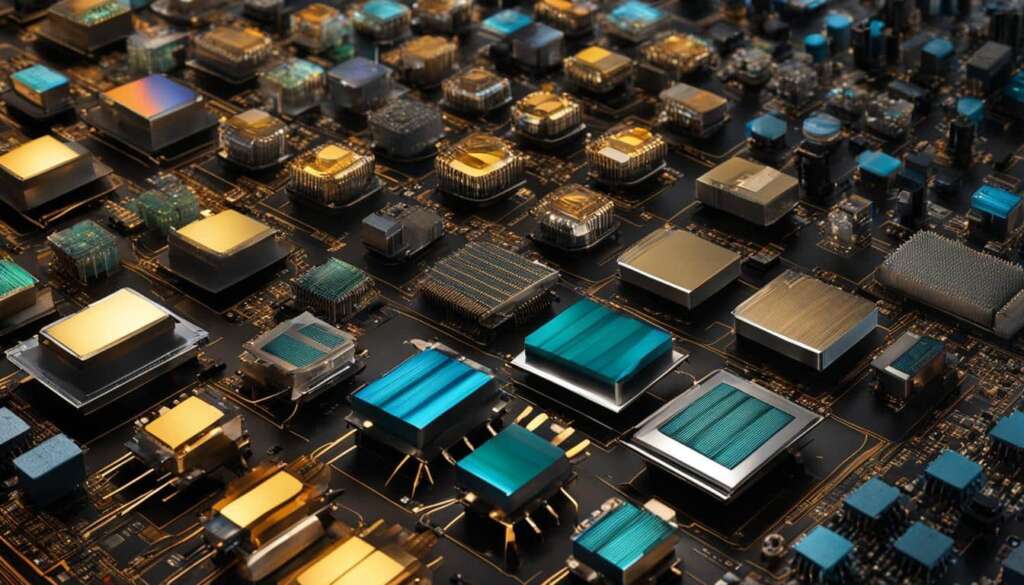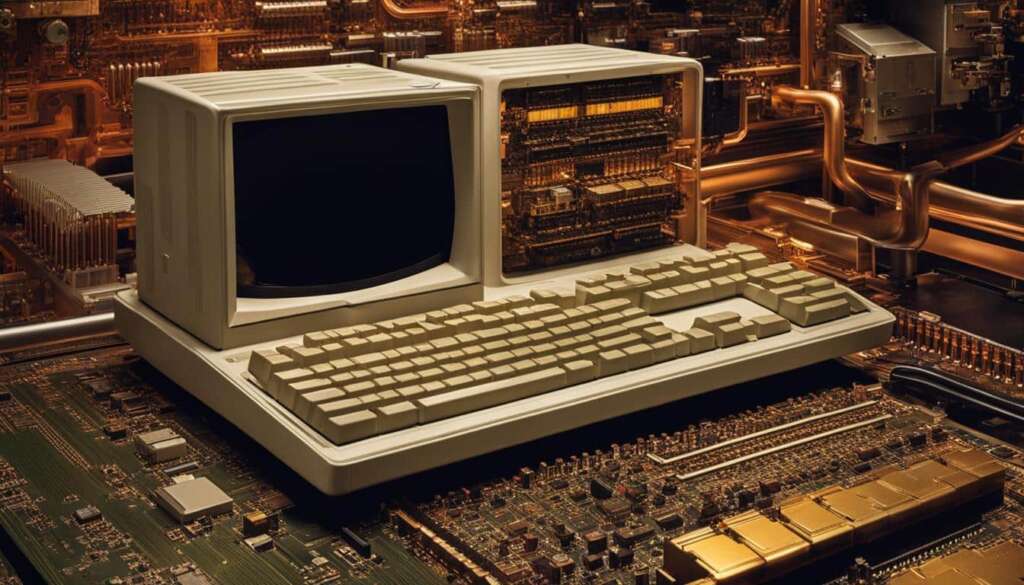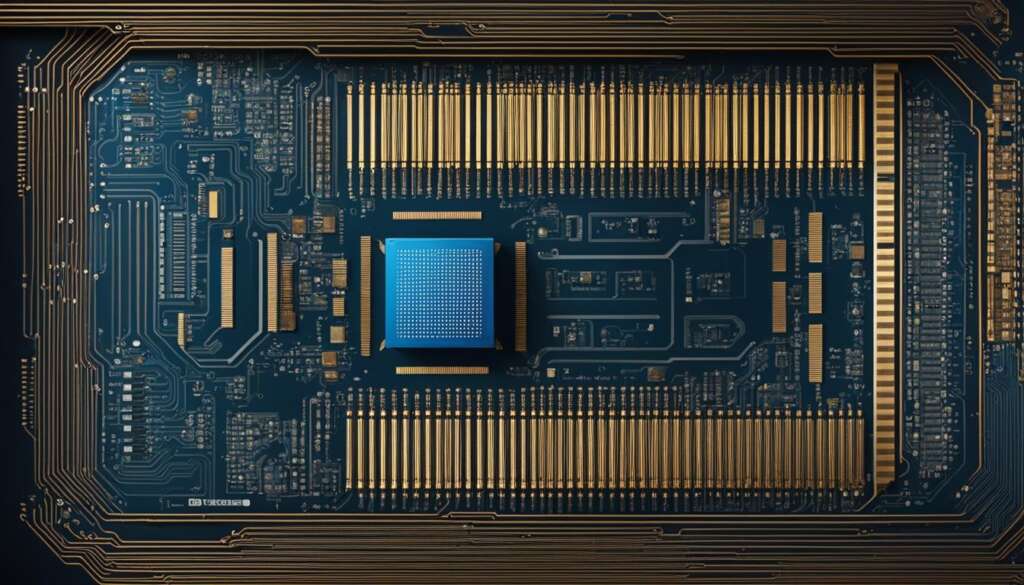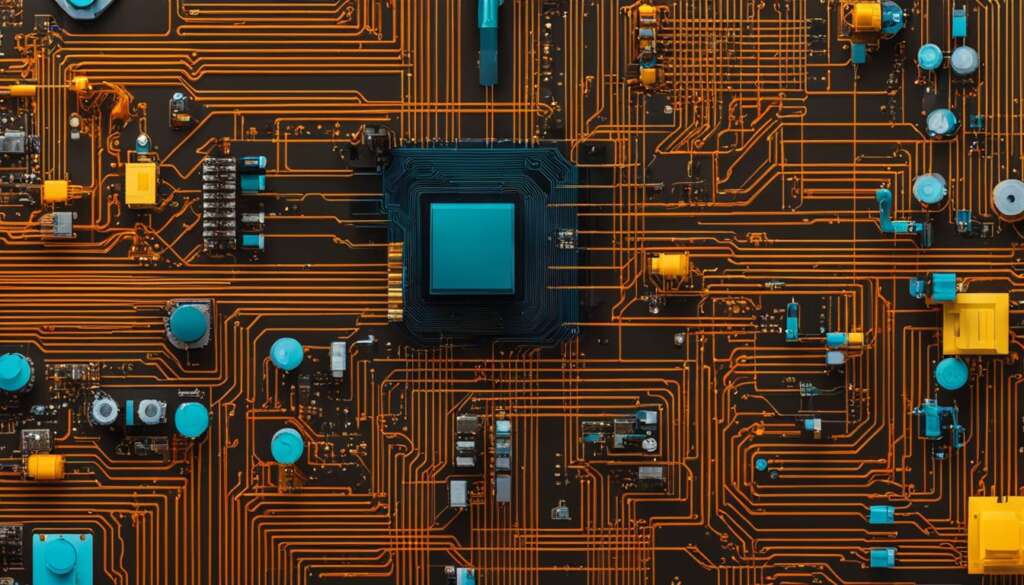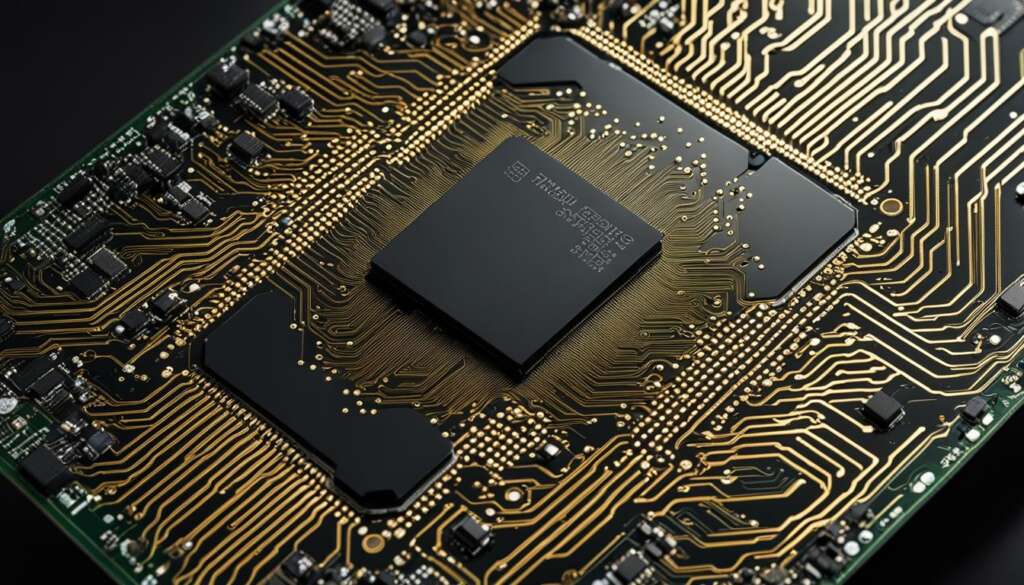Table of Contents
The evolution of server processors has had a significant impact on the performance and capabilities of data centres. Over time, processors have evolved from single-core to multi-core designs, increasing computational power and efficiency. This has allowed data centres to handle ever-expanding computing tasks and improve overall server performance.
The Importance of Data Centers in Modern Computing
Data centers play a crucial role in modern computing infrastructure by providing the necessary processing power and storage capabilities to handle and manage vast amounts of data. The advancements in server processors and chip technology have greatly contributed to the efficiency and performance of data centers.
Server chip advancements have led to increased core counts and improved architecture designs, resulting in higher computational power and enhanced overall server performance. This allows data centers to handle complex computing tasks more efficiently and effectively.
Furthermore, industry trends in data center processors are focused on achieving higher levels of scalability, reliability, and efficiency. This includes the integration of virtualization technologies, which enable data centers to optimize resource allocation and improve server utilization.
The Role of Data Centers in the Digital Transformation
In today’s digital era, businesses heavily rely on data for decision-making and operational efficiencies. Data centers provide the infrastructure required to store, process, and analyze this data, enabling organizations to unlock valuable insights and drive innovation.
Data center processors are at the core of this transformation, as they ensure that the data processing and analytical capabilities meet the demands of modern business applications. With advancements in server chip technology, data centers can support real-time analytics, machine learning, and artificial intelligence workloads, enabling businesses to gain a competitive edge.
Industry Trends and Future Directions
The data center industry is witnessing several trends and innovations that will shape its future. One significant trend is the move towards edge computing, which brings processing capabilities closer to the data source, reducing latency and improving performance for time-sensitive applications.
Another emerging trend is the focus on energy efficiency and sustainability in data center operations. This includes the adoption of green cooling technologies, such as liquid immersion cooling, which improve energy consumption and reduce environmental impact.
Looking ahead, data centers will continue to evolve and adapt to meet the increasing demands of businesses and technological advancements. The future of data centers lies in the continuous development of server chip technology, the adoption of hybrid infrastructures, and the integration of software-defined components.
| Advancements in Data Center Processors | Industry Trends | Future Directions |
|---|---|---|
| Increased core counts | Focus on scalability, reliability, and efficiency | Continuous development of server chip technology |
| Improved architecture designs | Integration of virtualization technologies | Adoption of hybrid infrastructures |
| Enhanced computational power | Move towards edge computing | Integration of software-defined components |
The Evolution of Server Components: Servers, Storage, and Networking
The evolution of data centers is not limited to server processors alone. Over the years, other crucial components of data centers, including servers, storage, and networking, have also undergone significant advancements. These advancements have played a pivotal role in improving the overall efficiency and performance of data centers.
Evolution of Servers
Servers have evolved from bulky and expensive machines to more compact and powerful systems. The introduction of blade servers has allowed data centers to maximize their physical space and increase server density. Additionally, the development of virtualization technologies has enabled multiple virtual servers to run on a single physical server, leading to improved resource utilization and cost savings.
Advancements in Storage
The evolution of storage in data centers has been remarkable. The early days of data centers saw the use of floppy disks and CDs, which were gradually replaced by more compact and efficient storage solutions such as USBs and SSDs. Alongside advancements in physical storage devices, the protocols and connectivity options for storage have also improved, enabling faster and more reliable data access and transfer.
Networking Innovations
The networking infrastructure of data centers has witnessed significant advancements as well. From slower connection speeds to high-speed Ethernet and fiber optic links, networking has become faster and more efficient. The introduction of devices like switches, routers, and firewalls has allowed for better control and security of data center networks, ensuring smooth data flow and protection against external threats.
| Component | Advancements |
|---|---|
| Servers |
|
| Storage |
|
| Networking |
|
These advancements in server components have not only contributed to the improvement of data center performance but have also paved the way for more efficient operations and resource management. As technology continues to evolve, it is expected that server components will undergo further enhancements, leading to even more advanced and efficient data center infrastructures.
The Evolution of Server Components: Servers, Storage, and Networking
As server processors have evolved and data centers have become more advanced, other components of data centers have also undergone significant transformations. Servers, storage, and networking technologies have all played crucial roles in the evolution and efficiency of data centers.
Server Components
Servers form the backbone of any data center, handling the processing and storage of data. Over the years, servers have become more powerful and efficient, thanks to advancements in server processors and architecture. The evolution of server processors from single-core to multi-core designs has greatly increased computational power and improved overall server performance. This has enabled data centers to handle complex computing tasks and support a wide range of applications.
Storage Evolution
In terms of storage, data centers have seen significant advancements in technology. From traditional storage mediums like floppy disks and CDs, storage devices have evolved to USBs and SSDs (Solid State Drives). These advancements have not only increased storage capacity but also improved data access speeds. Additionally, protocols and connectivity for storage have also evolved, allowing for faster data transfers and more efficient storage management.
Advancements in Networking
Networking technologies have played a vital role in the evolution of data centers. The introduction of high-speed connections has enabled faster communication between servers, resulting in improved data transfer rates and reduced latency. Data centers now utilize various networking devices such as switches, routers, and firewalls to ensure reliable and secure data transmission. These advancements in networking have contributed to the overall efficiency and performance of data centers.
| Server Components | Storage Evolution | Advancements in Networking |
|---|---|---|
| Evolution of server processors Increased computational power Improved server performance |
Transition from traditional storage mediums to USBs and SSDs Increased storage capacity Improved data access speeds |
Introduction of high-speed connections Improved data transfer rates Reduced latency Utilization of networking devices |
The Rise of Hyper-Converged Infrastructure
Hyper-converged infrastructure (HCI) has emerged as a game-changing technology in the world of data centers. It brings together software-defined components into a single HCI node, simplifying management and enabling seamless scalability and flexibility. This approach not only enhances efficiency but also reduces the reliance on physical devices, leading to cost savings and improved resource allocation.
With HCI, the traditional silos of networking, storage, and computing are replaced by software-defined network, storage, and compute components. This shift allows for greater agility and adaptability, as well as improved data center performance. By virtualizing and abstracting these components, HCI enables administrators to easily manage and allocate resources according to the needs of their workloads.
A key advantage of HCI is its ability to streamline operations and reduce complexity. With traditional infrastructure, managing multiple components can be challenging and time-consuming. However, HCI provides a unified interface that simplifies management and allows for centralized control. This makes it easier to scale out or scale up the infrastructure, ensuring that it can meet the growing demands of modern data centers.
HCI brings together software-defined components into a single HCI node, simplifying management and enabling seamless scalability and flexibility.
The Benefits of HCI
There are several benefits to adopting hyper-converged infrastructure:
- Simplified Management: HCI provides a unified interface for managing software-defined components, reducing complexity and streamlining operations.
- Improved Scalability: With HCI, it is easier to scale out or scale up the infrastructure as needed, allowing data centers to adapt to changing demands.
- Cost Savings: By consolidating software-defined components, HCI reduces the reliance on physical devices, resulting in cost savings for organizations.
- Enhanced Performance: Software-defined components allow for greater agility and adaptability, leading to improved data center performance.
Future Outlook
The future of data centers is expected to embrace hybrid infrastructures, combining both hardware-based and software-based components. This will further enhance the efficiency and performance of data centers, allowing for greater flexibility and scalability. As technology continues to evolve, hyper-converged infrastructure is set to play a pivotal role in shaping the data centers of tomorrow.
Data Center Cooling Innovations
In the ever-growing world of data centers, efficient cooling has become a critical factor in maintaining optimal performance and managing energy consumption. Traditional air cooling methods have limitations in addressing the increasing heat generated by high-density server deployments. As a result, innovative cooling technologies like liquid immersion cooling have emerged to meet the demands of modern data centers.
Liquid immersion cooling involves submerging servers and other components in a non-conductive liquid, such as mineral oil or dielectric fluid. This method provides more efficient heat dissipation compared to air cooling, as liquids have higher thermal conductivity. It allows heat to be rapidly transferred away from the components, reducing the risk of overheating. Liquid immersion cooling also enables higher density server deployments, as the liquid can reach spaces that air cannot, resulting in improved space utilization and scalability.
Furthermore, liquid immersion cooling offers energy efficiency benefits. By eliminating the need for traditional air conditioning systems to cool the data center environment, significant energy savings can be achieved. The liquid absorbs the heat directly from the components, eliminating the need for energy-intensive air circulation and reducing overall cooling costs. This is particularly advantageous for large-scale data centers, where energy consumption and operating costs can be substantial.
Overall, liquid immersion cooling technology represents an important innovation in data center cooling. Its ability to efficiently dissipate heat and improve energy efficiency makes it an attractive solution for modern data center operators. As technology continues to advance, we can expect further developments in cooling technologies, paving the way for even more efficient and sustainable data centers in the future.
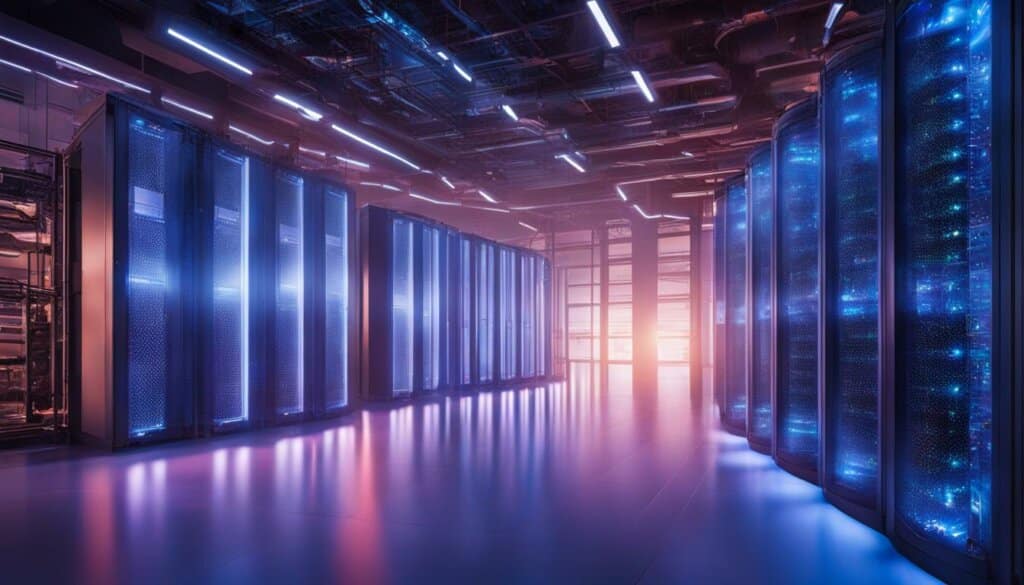
Table: Comparison of Cooling Technologies
| Cooling Technology | Advantages | Disadvantages |
|---|---|---|
| Traditional Air Cooling |
|
|
| Liquid Immersion Cooling |
|
|
| Indirect Liquid Cooling |
|
|
“Liquid immersion cooling technology represents an important innovation in data center cooling.”
The Evolution of Data Centers through the Decades
The evolution of data centers can be traced back to the early days of computing in the 1940s and 1960s. During this time, mainframes and early computers laid the foundation for data centers, serving as the central hubs for computing operations. These early data centers were large and required extensive infrastructure to support their operations, including dedicated spaces, specialized cooling systems, and power supply.
However, it was the advent of microprocessors in the 1970s that truly revolutionized data centers. Microprocessors enabled significant advancements in computing power and efficiency, leading to the development of miniaturized and more affordable computers. With these advancements, data centers started to expand their capabilities and became more accessible to businesses and organizations of all sizes.
The 1980s and 1990s marked a period of rapid technological progress, with the rise of personal computers, the internet, and the dot-com boom. These developments fueled the need for enterprise-owned server rooms and data center service providers, as businesses sought to centralize their computing operations and harness the power of interconnected networks. As a result, data centers became essential for storing, processing, and managing vast amounts of data.
| Decade | Key Developments |
|---|---|
| 1940s – 1960s | Mainframes and early computers lay the foundation for data centers. |
| 1970s | Advent of microprocessors revolutionizes data centers, enabling miniaturization and increased accessibility. |
| 1980s – 1990s | Rise of personal computers, internet, and dot-com boom drives the need for enterprise-owned server rooms and data center service providers. |
The evolution of data centers reflects the ever-changing landscape of computing. From the early days of mainframes to the modern era of cloud computing, data centers have continuously adapted to meet the growing demands of businesses and technological advancements.
The 2000s marked a significant turning point with the transition to cloud computing. This paradigm shift allowed businesses to move away from traditional on-premises data centers and leverage the scalability and flexibility of cloud-based solutions. Cloud computing offered companies the ability to access computing resources on-demand, without the need for extensive infrastructure investments. This shift, combined with the development of more adaptable server technologies, has paved the way for the future of data centers.
Looking ahead, data centers will continue to evolve and embrace hybrid infrastructures that combine hardware-based and software-based components. The increasing importance of edge computing will drive the need for decentralized data centers located closer to the devices and data sources they serve. The future of data centers lies in sustainability, energy efficiency, and the utilization of green cooling technologies to minimize their environmental impact. As technology advances, data centers will remain at the forefront, driving innovation and supporting the digital transformation of industries across the globe.
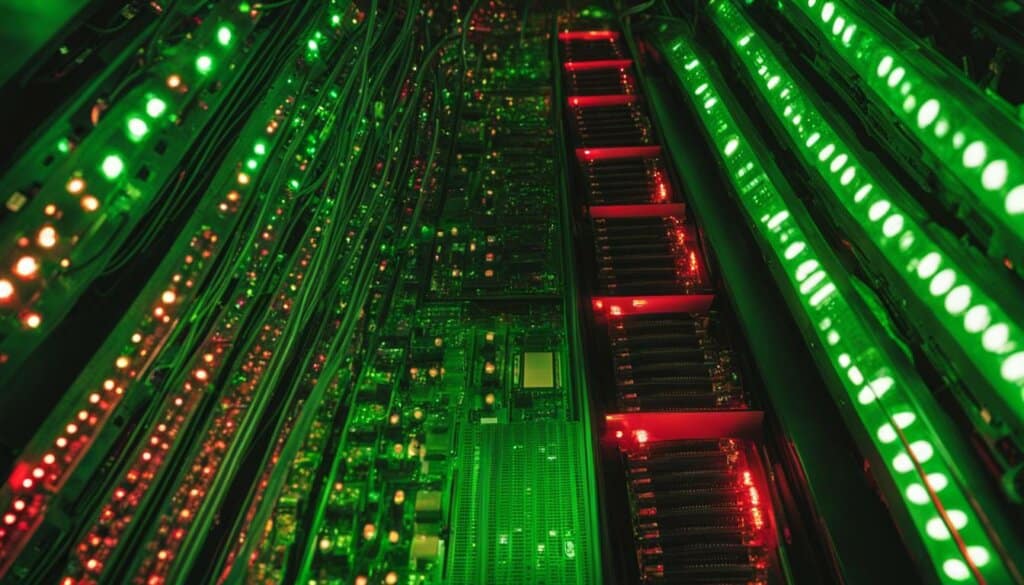
The Future of Data Centers
The future of data centers is set to be shaped by the adoption of hybrid infrastructures and the rise of the SaaS model. Hybrid infrastructures combine hardware-based and software-based components to provide enhanced efficiency and performance. This approach allows businesses to take advantage of the scalability and flexibility of virtualized resources while still leveraging the power and reliability of physical infrastructure.
With hybrid infrastructures, organizations can optimize their data center operations by dynamically allocating workloads to the most appropriate environment. This flexibility allows for efficient resource utilization and cost savings, as businesses can scale up or down based on demand. Additionally, hybrid infrastructures enable seamless integration between on-premises and cloud-based resources, ensuring data accessibility and redundancy.
The shift towards the SaaS model is also revolutionizing the future of data centers. Software-as-a-Service allows businesses to access and utilize software applications over the internet, eliminating the need for on-premises deployment and infrastructure maintenance. This model offers greater flexibility, as businesses can access applications from anywhere, at any time, using any device. It also provides cost savings, as businesses only pay for the software licenses and features they need, without investing in hardware or extensive IT support.
| Benefits of Hybrid Infrastructures | Benefits of the SaaS Model |
|---|---|
|
|
The future of data centers is also focused on sustainability and energy efficiency. As the demand for data processing grows, so does the need for innovative cooling technologies that can manage the heat generated by server processors. Green cooling technologies, such as liquid immersion cooling, are emerging as viable solutions. These technologies offer higher density server deployments, reduced energy consumption, and efficient heat dissipation, ensuring the sustainability and longevity of data center operations.
Furthermore, the future of data centers will be characterized by the increasing importance of edge computing. With the proliferation of IoT devices and the need for real-time data processing, edge computing brings computing resources closer to where data is generated. This minimizes latency and optimizes network traffic, allowing for faster and more efficient service delivery. Edge computing will play a crucial role in supporting emerging technologies such as autonomous vehicles, smart cities, and advanced analytics applications.
The Growing Significance of Data Centers
In today’s technology-driven world, data centers have become crucial for businesses to centralize and manage vast amounts of data. They improve overall business efficiency by providing easy access, analysis, and storage of data. Data centers enable organizations to streamline operations, reduce duplication of effort, and gain valuable insights into their business operations.
By centralizing data in data centers, businesses can ensure that information is easily accessible to employees, regardless of their location. This allows for seamless collaboration and decision-making, as employees can access and analyze data in real-time. Additionally, data centers provide a secure environment for storing valuable data, protecting it from unauthorized access and potential loss.
Furthermore, data centers play a vital role in business efficiency by enabling organizations to leverage data analytics and business intelligence tools. These tools allow businesses to gain valuable insights into customer behavior, market trends, and operational performance. By analyzing this data, businesses can identify areas for improvement, optimize processes, and make informed decisions that drive growth and success.
| Benefits of Data Centers for Business Efficiency |
|---|
| Centralization of data for easy access and collaboration |
| Secure storage and protection of valuable data |
| Enablement of data analytics and business intelligence |
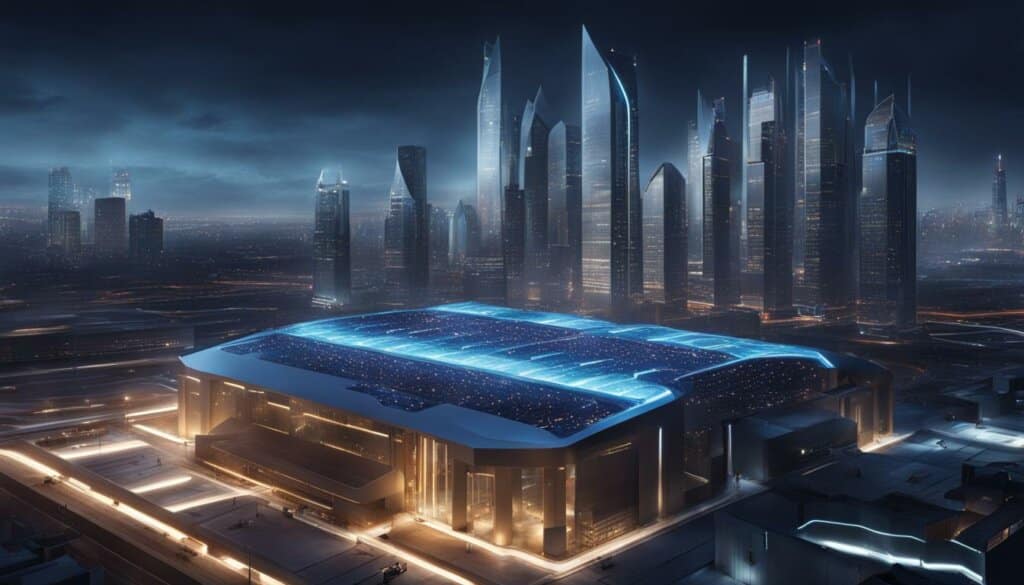
Data centers are no longer just a necessity for large enterprises. Small and medium-sized businesses also recognize the importance of data centers in driving efficiency and gaining a competitive edge. With the increasing reliance on digital technologies and the growing volume of data generated, the significance of data centers will continue to grow.
Conclusion
The evolution of server processors has played a vital role in the transformation and advancement of data centres. From the early days of computing to the present, data centres have become more efficient, scalable, and adaptable. The future of data centres lies in hybrid infrastructures, green cooling technologies, and the adoption of edge computing.
As technology continues to evolve, data centres will continue to adapt and innovate to meet the growing demands of businesses and drive advancements in the computing industry. The server processor evolution has enabled data centres to handle ever-expanding computing tasks and improve overall server performance. This has resulted in improved business efficiency, streamlined operations, and the centralisation of vast amounts of data.
In the future, hybrid infrastructures combining hardware-based and software-based components will enhance efficiency and performance. Embracing green cooling technologies will ensure sustainability and energy efficiency. Additionally, the adoption of edge computing will enable faster and more efficient services, accommodating the increasing number of devices and data sources.
Overall, the future of data centres holds great promise and potential. It will continue to shape the way businesses operate, driving technological advancements and playing a crucial role in supporting various industries. The evolution of server processors and the continuous innovation in data centre technology pave the way for a more connected and efficient digital world.
FAQ
What is the impact of server processor evolution on data centers?
The evolution of server processors has significantly improved the performance and capabilities of data centers, allowing for increased computational power and efficiency.
What components make up a data center?
Data centers consist of servers, storage arrays, and network switches, which work together to handle and manage vast amounts of data.
How have server processors advanced over time?
Server processors have evolved from single-core to multi-core designs, increasing computational power and efficiency.
What advancements have been made in server components?
Server components such as storage and networking have seen significant advancements, including the transformation of storage from floppy disks to SSDs and the shift to high-speed connections in networking.
How has virtualization revolutionized data centers?
Virtualization allows for the virtualization of hardware, memory, software, network, and storage components, enabling multiple operating systems to run on a single computer and reducing hardware costs.
What is the difference between converged infrastructure (CI) and hyper-converged infrastructure (HCI)?
Converged infrastructure integrates and virtualizes various components into a single node, while hyper-converged infrastructure consolidates software-defined components into a single node, simplifying management and enhancing scalability and flexibility.
What is the future of data centers?
The future of data centers is expected to embrace hybrid infrastructures, sustainable and energy-efficient cooling technologies, and the adoption of edge computing to accommodate the increasing number of devices and data sources.
How have data centers evolved over the decades?
Data centers have evolved from mainframes and early computers to enterprise-owned server rooms and the development of adaptable server technologies, leading to the cloud revolution and the growth of edge computing.
How are data centers significant for businesses?
Data centers centralize and manage vast amounts of data, improving business efficiency by providing easy access, analysis, and storage of data, streamlining operations, and offering valuable insights into business operations.

